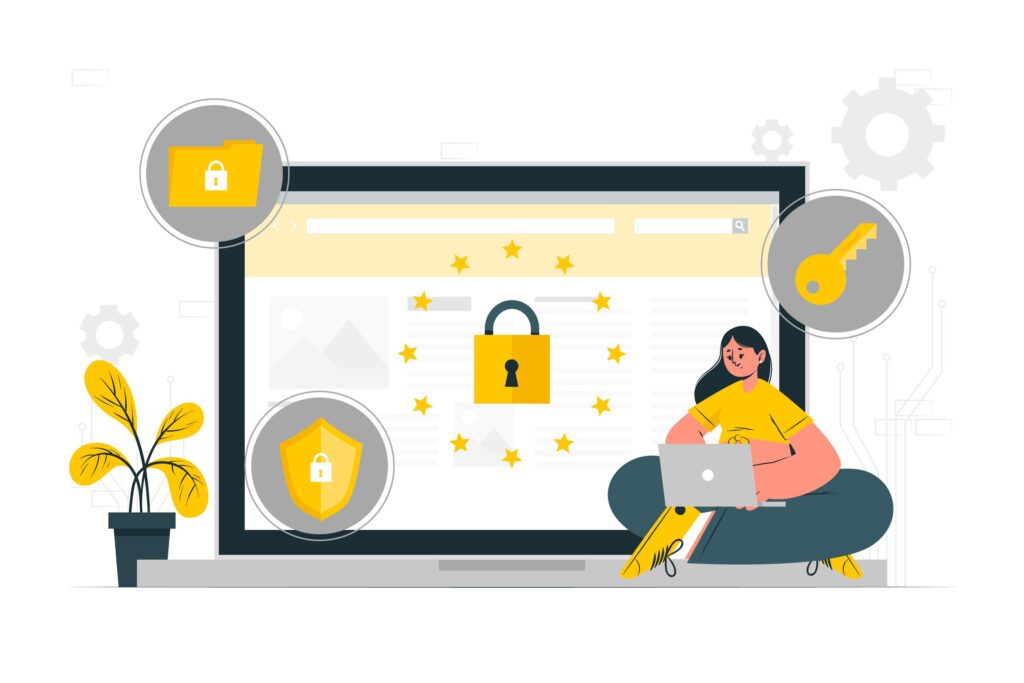In today’s interconnected world, our personal information is more valuable than ever before. With the increasing use of technology and the internet, we often find ourselves sharing sensitive data, such as passwords, PINs, and credit card numbers, through various digital channels. While we take measures to protect our online privacy, we sometimes overlook a low-tech yet effective method of data theft: shoulder surfing. In this article, we will delve into what shoulder surfing is, how it works, and most importantly, how to protect yourself from this often underestimated threat.

What is Shoulder Surfing?
Shoulder surfing is a form of information theft where an individual covertly observes another person’s private or confidential information by simply looking over their shoulder. It can occur in various settings, such as public transportation, coffee shops, ATMs, and even in the workplace. The term “shoulder surfing” aptly describes the action – the perpetrator lurks nearby, typically behind the victim, and watches as they input sensitive information on a device or physically write it down.
How Does Shoulder Surfing Work?
Shoulder surfing is a deceptively simple method of information gathering that relies on the carelessness or unawareness of the victim. Here’s how it typically unfolds:
-
Choosing a Target: The shoulder surfer selects a potential victim based on their vulnerability, such as someone engrossed in their smartphone or a person who appears distracted.
-
Positioning: The perpetrator stands or sits close enough to the target to get a clear view of the victim’s actions but far enough away to avoid arousing suspicion.
-
Observation: The shoulder surfer closely watches as the victim enters sensitive information, whether it’s a password, a PIN code, a credit card number, or any other valuable data.
-
Memorization or Recording: The perpetrator may either memorize the information or use a hidden camera, a smartphone, or even pen and paper to record it for later use.
-
Exit: After obtaining the desired information, the shoulder surfer quickly leaves the scene to avoid detection.
The Consequences of Shoulder Surfing
Shoulder surfing might seem like a minor inconvenience, but its consequences can be significant. Once a malicious actor gains access to your personal or financial information, they can use it for various nefarious purposes, including identity theft, unauthorized financial transactions, and compromising your online accounts.
Protecting Yourself from Shoulder Surfing
Now that we understand what shoulder surfing is and how it works, let’s explore some practical steps to protect yourself from this privacy threat:
-
Stay Vigilant: Always be aware of your surroundings, especially in public places where shoulder surfing is more likely to occur. Avoid displaying sensitive information openly.
-
Use Privacy Screens: Consider using privacy screen protectors on your smartphones, tablets, and laptops. These screens limit the viewing angles, making it difficult for shoulder surfers to see your screen unless they are directly in front of it.
-
Cover Your Keypad: When entering PINs or passwords on ATMs or other devices, use your hand or body to shield the keypad from view. This will make it significantly harder for shoulder surfers to see what you’re typing.
-
Change Passwords Regularly: Periodically change your passwords and PINs to minimize the potential impact of shoulder surfing if someone does manage to observe your information.
-
Use Two-Factor Authentication (2FA): Enable 2FA on your online accounts whenever possible. This adds an extra layer of security even if someone obtains your password.
-
Be Cautious with Public Wi-Fi: Avoid conducting sensitive transactions or accessing confidential information when connected to public Wi-Fi networks, as these networks can be less secure and more prone to surveillance.
-
Check Your Surroundings: Before entering sensitive information, scan your surroundings for suspicious individuals. If someone appears to be loitering nearby or watching you closely, move to a more private location.
Conclusion
Shoulder surfing may not rely on sophisticated hacking techniques, but its potential impact on your privacy and security should not be underestimated. By staying vigilant, using privacy screens, and following best practices for online security, you can reduce the risk of falling victim to this low-tech yet effective method of information theft. In an age where data is currency, protecting your personal and financial information is more important than ever, and safeguarding against shoulder surfing is just one piece of the cybersecurity puzzle.
اريد ان اكون هاكر